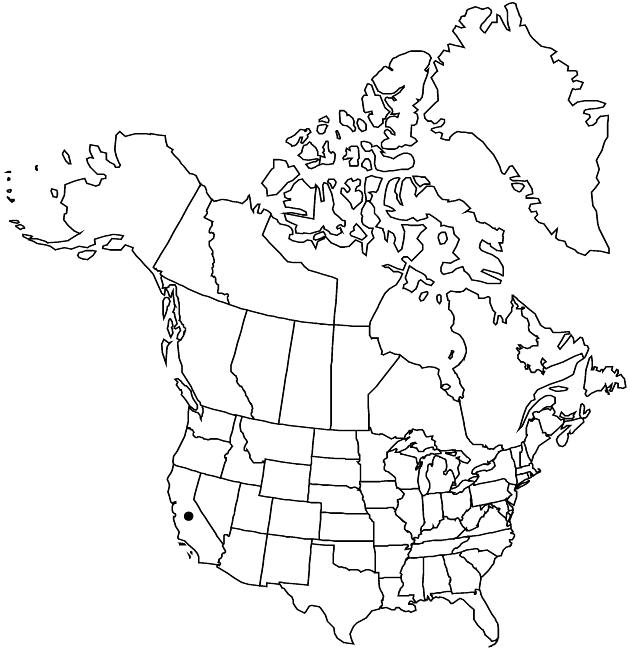Difference between revisions of "Rudbeckia klamathensis"
Castanea 59: 309. 1994.
FNA>Volume Importer |
GeoffLevin (talk | contribs) m (Fixed "x" in "Cox" authority) |
||
| (2 intermediate revisions by one other user not shown) | |||
| Line 1: | Line 1: | ||
{{Treatment/ID | {{Treatment/ID | ||
|accepted_name=Rudbeckia klamathensis | |accepted_name=Rudbeckia klamathensis | ||
| − | |accepted_authority=P. B. | + | |accepted_authority=P. B. Cox & Urbatsch |
|publications={{Treatment/Publication | |publications={{Treatment/Publication | ||
|title=Castanea | |title=Castanea | ||
| Line 8: | Line 8: | ||
}} | }} | ||
|common_names=Klamath coneflower | |common_names=Klamath coneflower | ||
| + | |special_status={{Treatment/ID/Special_status | ||
| + | |code=E | ||
| + | |label=Endemic | ||
| + | }}{{Treatment/ID/Special_status | ||
| + | |code=C | ||
| + | |label=Conservation concern | ||
| + | }} | ||
|basionyms={{Treatment/ID/Basionym | |basionyms={{Treatment/ID/Basionym | ||
|name=Rudbeckia californica var. intermedia | |name=Rudbeckia californica var. intermedia | ||
| Line 39: | Line 46: | ||
-->{{#Taxon: | -->{{#Taxon: | ||
name=Rudbeckia klamathensis | name=Rudbeckia klamathensis | ||
| − | |authority=P. B. | + | |authority=P. B. Cox & Urbatsch |
|rank=species | |rank=species | ||
|parent rank=section | |parent rank=section | ||
| Line 52: | Line 59: | ||
|publication title=Castanea | |publication title=Castanea | ||
|publication year=1994 | |publication year=1994 | ||
| − | |special status= | + | |special status=Endemic;Conservation concern |
| − | |source xml=https:// | + | |source xml=https://bitbucket.org/aafc-mbb/fna-data-curation/src/2e0870ddd59836b60bcf96646a41e87ea5a5943a/coarse_grained_fna_xml/V19-20-21/V21_94.xml |
|tribe=Asteraceae tribe Heliantheae | |tribe=Asteraceae tribe Heliantheae | ||
|subtribe=Asteraceae (tribe Heliantheae) subtribe Rudbeckiinae | |subtribe=Asteraceae (tribe Heliantheae) subtribe Rudbeckiinae | ||
Latest revision as of 14:04, 30 November 2021
Perennials, 50–100 cm (rhizomatous, roots fibrous). Leaves greenish blue (± glaucous), blades ovate to elliptic, often lobed, herbaceous, bases attenuate to rounded, margins entire, coarsely dentate, or crenate, apices acute, faces glabrous or sparsely hairy (at least on abaxial veins); basal petiolate, 15–65 × 4–15 cm; cauline petiolate or sessile, 7–35 × 4–14 cm. Heads borne singly or (2–10) in ± corymbiform arrays. Phyllaries to 1.5 cm (margins ciliate, hairs appressed, apices acute to rounded). Receptacles ovoid to conic; paleae 5–6 mm, apices acute, abaxial tips hairy. Ray florets 7–15; laminae elliptic or oblong, 25–35 × 7–14 mm, abaxially hairy. Discs 15–35 × 12–22 mm. Disc florets 180–300+; corollas yellowish green, 3.5–4 mm; style branches ca. 1.5 mm, apices acute to obtuse. Cypselae 4.5–6 mm; pappi coroniform or of 5–8 scales, to 1.5 mm. 2n = 36.
Phenology: Flowering late summer–fall.
Habitat: Along streams
Elevation: 1000–1600 m
Discussion
Of conservation concern.
Selected References
None.
